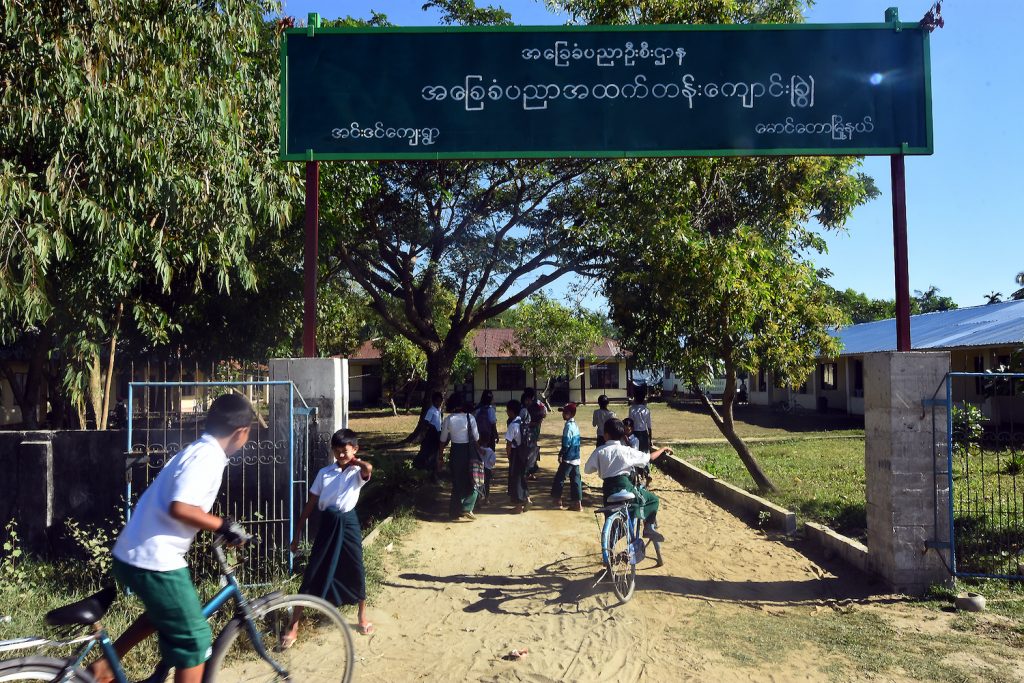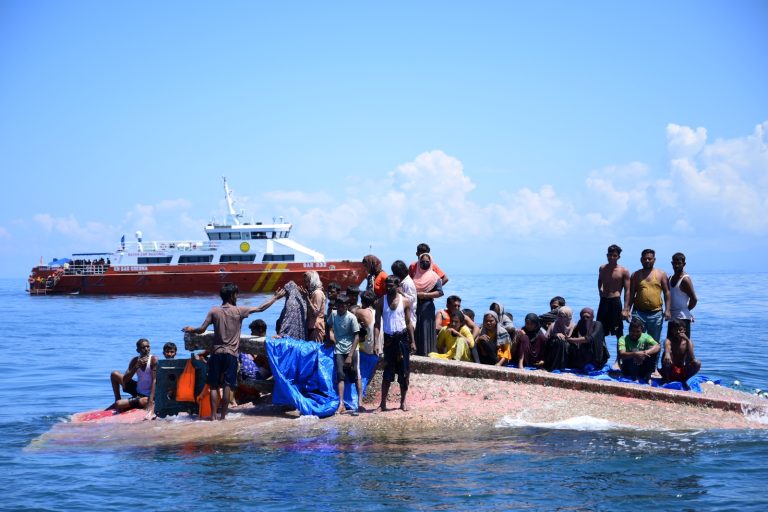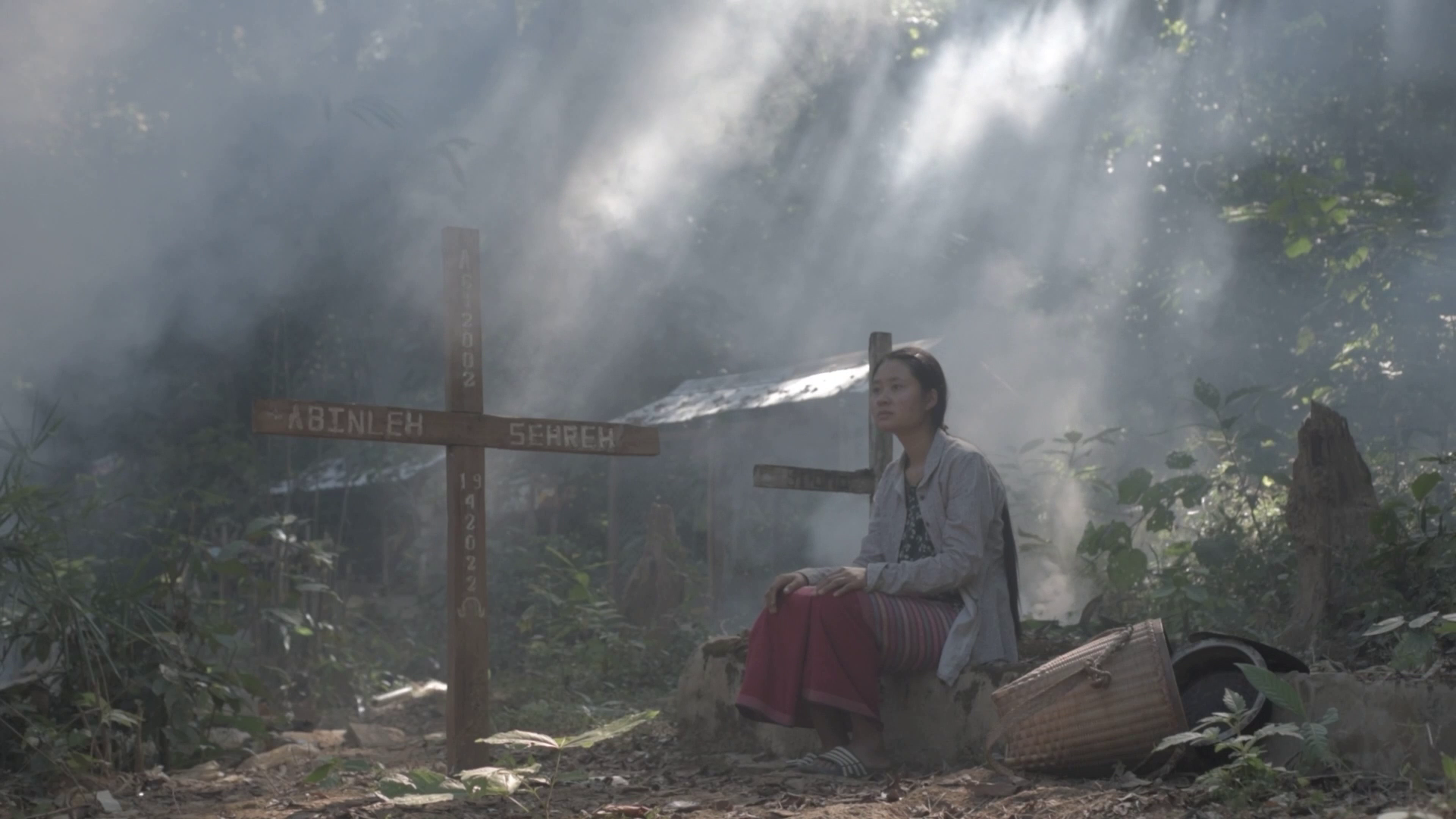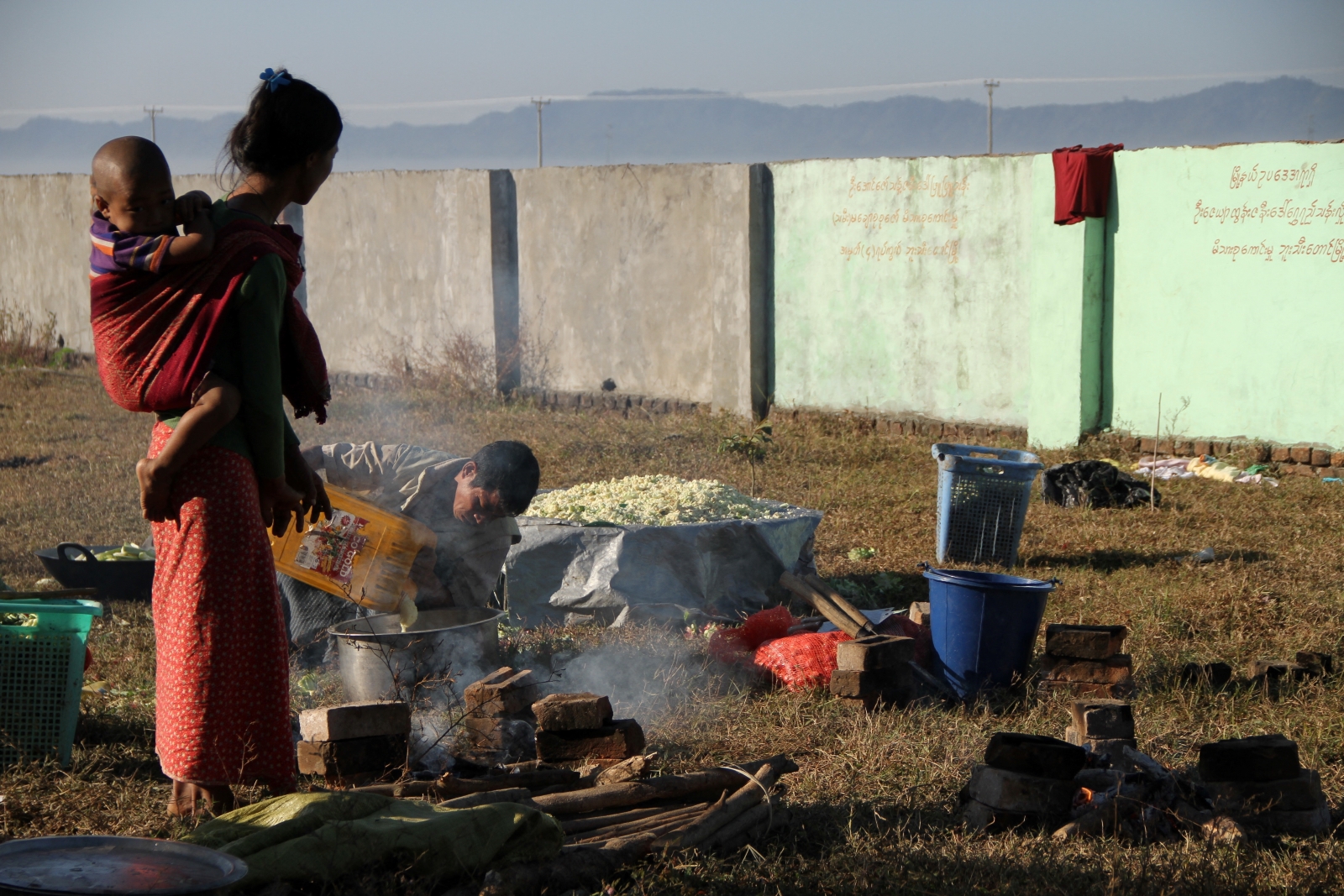Rakhine and Rohingya worked together to prevent bloodshed at Inn Din village during communal violence in 2012, but by the time the Tatmadaw arrived on August 27, 2017 the trust between them had collapsed.
By LAETITIA VAN DEN ASSUM | FRONTIER
Gu Dar Pyin, Inn Din, Tula Toli: three instantly recognisable names of villages in Rakhine State that witnessed terrible massacres after violence broke out in August 2017 and Myanmar’s military drove some 750,000 Rohingya across the border into Bangladesh. As the military campaign progressed, thousands were killed, women and girls were targeted for sexual violence, and more than 350 villages were burned to the ground.
Investigators and journalists – many of them citizen journalists – have provided detailed accounts of the massacres. These harrowing stories are etched in memory, and they deserve to be repeated again and again – and especially now, the third anniversary of August 2017.
Much is known about the 2017 massacres. But what do we know about the villages that were destroyed? When were they settled? By whom? How did they develop? And how did their multi-ethnic populations interact over the decades, through British colonial times, World War II, Myanmar’s independence and the military dictatorship that ruled from 1962 to 2011?
Take Inn Din, a village tract in Maungdaw Township that is documented in the Burma Gazetteer of 1917. Reuters reported extensively about the catastrophe that struck Inn Din between August 27 and September 2, 2017. Two of its journalists were imprisoned for more than 500 days for helping to reveal the truth about the massacre.
Read more: Wa Lone, Kyaw Soe Oo among 6,520 prisoners freed in presidential pardon
In 2016, a team from a Yangon-based NGO, the Center for Diversity and National Harmony, undertook surveys for a Conflict Assessment of Five Villages in Rakhine State. One of the villages was Inn Din. The assessment not only provides a wealth of information about people’s lives one year before the massacre, it also traces their history, livelihoods, intercommunal attitudes and interaction with the authorities.
Inn Din is on the coast, on a rough road halfway between the state capital, Sittwe, and Maungdaw. In 2016 Inn Din village tract consisted of five hamlets, three of which were inhabited by Rohingya Muslims and two by Rakhine Buddhists.
One of the hamlets was a so-called Na Ta La village. In the 1990s the military government established such villages as part of its policy to populate Muslim majority areas with people of other, predominantly Buddhist ethnicities. To accommodate the new hamlet, land was taken from the Rohingya, who were not compensated. This strained the relationship with their new neighbours before they had even arrived.
In 2016 the officially registered population of Inn Din village was 6,345. Of its 850 households, 680 were Rohingya and 170 Rakhine. Fishing was by far the most important livelihood. Farming and casual labour were less important sources of income.
Security challenges as well as a lack of technology and infrastructure – for example, the electricity needed to cool, freeze and store fish – kept productivity and incomes low. Most fishers were Rohingya but they rented boats from the Rakhine. Because the Rohingya also provided casual labour to Rakhine farmers, there was a good degree of economic interdependence between the two communities.
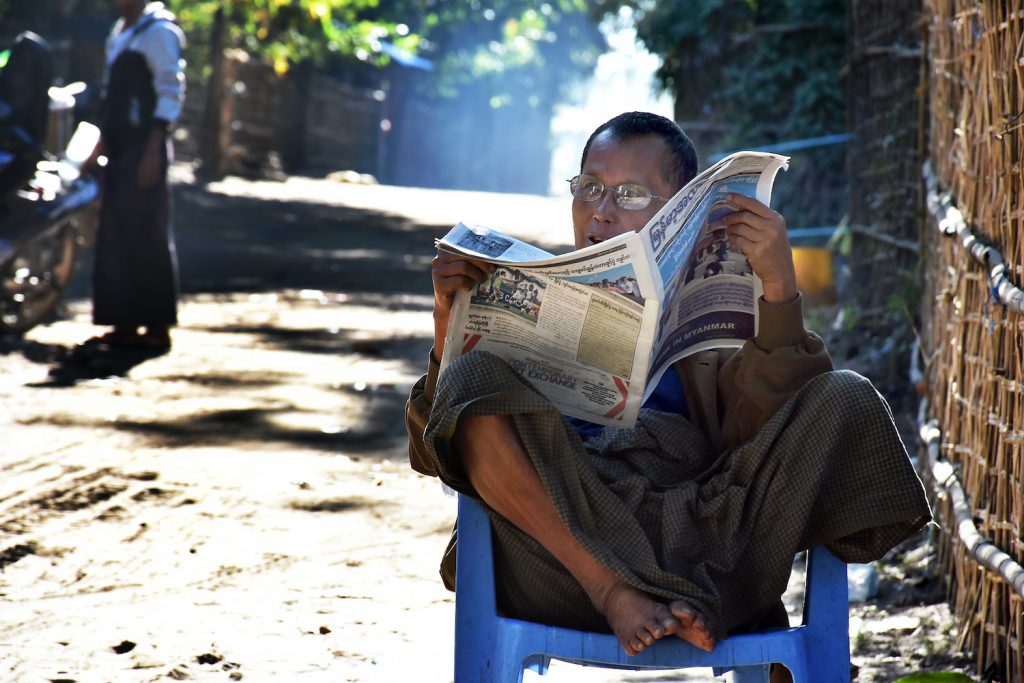
Before 1942 Inn Din’s demographic make-up was quite different from what CDNH found in 2016. It was predominantly Rakhine.
Following the Japanese invasion in 1942, widespread violence broke out between the Rakhine and Rohingya communities. The Rakhine sided with the Japanese and the Rohingya with the British.
Thousands died on both sides and mass displacement followed. Rakhine from the north fled to the south while the Rohingya went in the opposite direction. For a number of years, the state was ethnically divided between a Rohingya north and a Rakhine south.
Even today, the violence in 1942 is regarded by both Rohingya and Rakhine as a critical element in the rift between the communities. It has not been forgotten. At first it turned Inn Din into a Rohingya village in which Rakhine did not want to settle. That did not change until after independence when some Rakhine started to return. But even by 2016 the Rohingya remained by far the larger group.
Under military rule, from 1962 onwards, the Rohingya began to experience greater restrictions of movement. CDNH reports that while some incidents occurred, they were largely controlled as “both communities were oppressed by the local authorities”. Both were victimised.
In the 1990s, the establishment of the Na Ta La hamlet brought more non-Muslim inhabitants. Although the Rohingya suffered most because they had to give up land, the newcomers were not popular with the existing Rakhine population either.
Even in 2016 CDNH reported that the relationship between the inhabitants of the original Rohingya and Rakhine hamlets was better than that with the Na Ta La“newcomers”. Residents of the older hamlets had found a degree of intercommunal balance and trust, while business interactions were often described as thriving.
The importance of the trust between the communities was revealed in 2012. As ethnic violence swept through Rakhine, Inn Din stood out. It remained peaceful while other towns and villages burned. Peaceful coexistence was stronger than the lure of violence.
When news of attacks trickled in, elders from both sides met to discuss how they might stop the threat of violence. They went to the authorities and signed an agreement to prevent violence. The CDNH report tells how township officials played constructive roles by closing shops that sold alcohol and by imposing a leniently enforced curfew that helped to prevent escalation. For the most part, it worked.
It is difficult to pinpoint why the communities were able to collaborate to keep Inn Din safe. It was clear, however, that economic interdependence was a factor, as was having a mixed school. Moreover, Rohingya villagers enjoyed freedom of movement between Inn Din’s hamlets. Both sides knew each other.
Although the degree of trust should not be exaggerated, knowing each other probably meant that the elders realised that resorting to violence could only worsen the situation for everyone.
The violence that engulfed much of Rakhine in 2012 did not leave Inn Din completely untouched. CDNH reported that by 2016 interactions had become increasingly tinged with suspicion. The conflict had an immediate impact on both the frequency and quality of intercommunal interactions. The sense of security declined, business relations were affected, and the number of visits by Rohingya and Rakhine to each other’s houses and hamlets dropped.
The decline started at about the same time as a dramatic reduction in the cost of SIM cards that made mobile internet access affordable. Until 2014, fewer than 1 percent of the population had internet access. By 2017, cheap SIM cards and free internet access via Facebook meant that coverage had risen to more 30pc.
Myanmar had long been cut off from the outside world and digital literacy was still low, so how could users judge what was real and what was fake? Fake news started to flow liberally and included deliberate attempts to demonise Muslims, and the Rohingya in particular. The public attitude towards Muslims hardened.
In October 2016, the Arakan Rohingya Salvation Army attacked several Myanmar security posts along the border with Bangladesh. The military retaliated with so-called clearance operations that were neither proportionate nor discriminate. As many in Myanmar welcomed the brutal crackdown, about 80,000 Rohingya fled to Bangladesh. Although there is little information about Inn Din at that time, we know that after 2012 some Rakhine villagers had started an ethnic militia group. An already precarious situation was worsening.
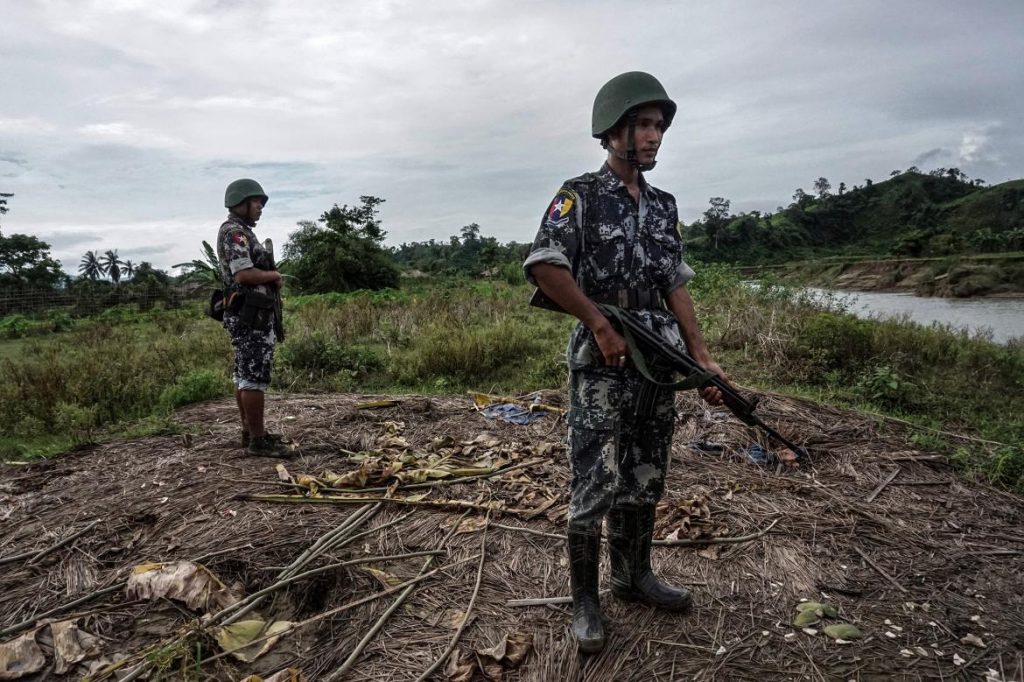
What came next is hard to fathom. After renewed ARSA attacks in 2017, troops of the Tatmadaw’s 33rd Light Infantry Division arrived in Inn Din on August 27. They told the Rakhine militias they had orders to “clear” the Rohingya hamlets. The militia members and additional volunteers armed themselves with machetes, sticks and some guns. Neighbours were now prepared to turn on neighbours.
As the Rohingya fled, the military and the militias attacked their hamlets, looting, pillaging and burning homes. Satellite images showed total destruction.
On September 1, the Tatmadaw arrested at random 10 men and boys from among a group of Rohingya who had left their hiding places and were waiting on a nearby beach to take a boat to Bangladesh. The Tatmadaw told the militias that the 10 Rohingya were part of a group that was responsible for large-scale ARSA attacks on August 25.
The next day the 10 were taken to some scrubland. First, they were questioned about the disappearance of a local Rakhine farmer. Then they were led up a hill where they were brutally murdered.
Reuters reporters Ko Wa Lone and Ko Kyaw Soe Oo discovered their shallow grave and obtained images of the 10 victims, before and after they were killed. The journalists were arrested, charged and sentenced in September 2018 to seven years’ imprisonment for violating the colonial-era Official Secrets Act, even though the fact that the killings had occurred was no longer disputed. They were released under a presidential pardon in May 2019.
With the Rohingya gone, new dwellings were erected in Inn Din. In 2018 Reuters reported that the dwellings were commissioned by a group called the Ancillary Committee for the Reconstruction of Rakhine National Territory in the Western Frontier. This group of Buddhist nationalists had already resettled more than 130 families in Inn Din and Koe Tan Kauk, another previously Rohingya majority village. One of the group’s leaders, U Than Tun, has openly opposed the repatriation of any Rohingya.
Read more: Forsaken at the ‘western gate’: Authorities evict Buddhist settlers from villages in northern Rakhine
In late 2018 Reuters reported the existence of a map that reflects a broad plan to redraw the ethno-religious boundaries of northern Rakhine. The plan envisaged an apartheid state with separate settlements for Rakhine, Rohingya, Hindus and smaller minorities. Apartheid – or enforced ethnic segregation – is a crime against humanity. The Rohingya would get the worst deal because they are considered stateless and Myanmar believes that it is entitled to impose countless restrictions on them that affect their freedom of movement, as well as their livelihoods and access to health and education.
The situation reminds me of something I was once told by a member of the security forces: “We don’t like these Rohingya villages. They are cluttered and messy. We want them in villages that line either side of a main street. These will be much easier to patrol.”
Since late 2018 Rakhine’s landscape has changed again. Armed conflict between Myanmar’s military and the insurgent Arakan Army has escalated and has thrown much of the state into chaos. The AA seeks to establish Rakhine state as a confederacy along the lines of the United Wa State Army’s autonomous region. The conflict, compounded by a long internet blackout, makes it difficult to obtain information about Inn Din and its inhabitants. Meanwhile, most of its former Rohingya residents have already spent three years in Bangladesh. Prospects for repatriation remain bleak.
Despite the present situation, Inn Din’s story holds hope for all who believe that Rakhine’s diverse communities can work together to make their state into one where security, development and human rights work for everyone.
From my own interactions I know that the vast majority of people of all communities want a peaceful and economically prosperous future. They share common interests, as shown by the village leaders of Inn Din in 2012.
As the final report of the Rakhine Advisory Commission, released in August 2017, concludes: “The question should not be whether Rakhines and Muslims will live together, but rather how they will live together. Reintegration, not segregation, is the best path to long-term stability and development in Rakhine State.”
Determining how that can best be achieved, is first and foremost a task for the communities themselves.


